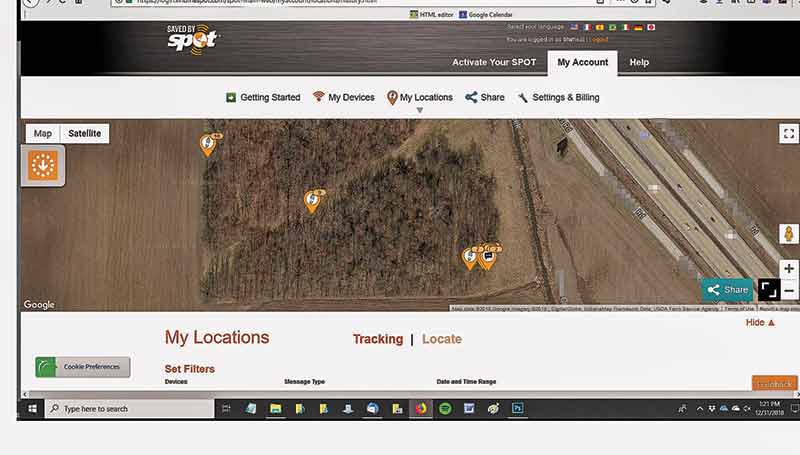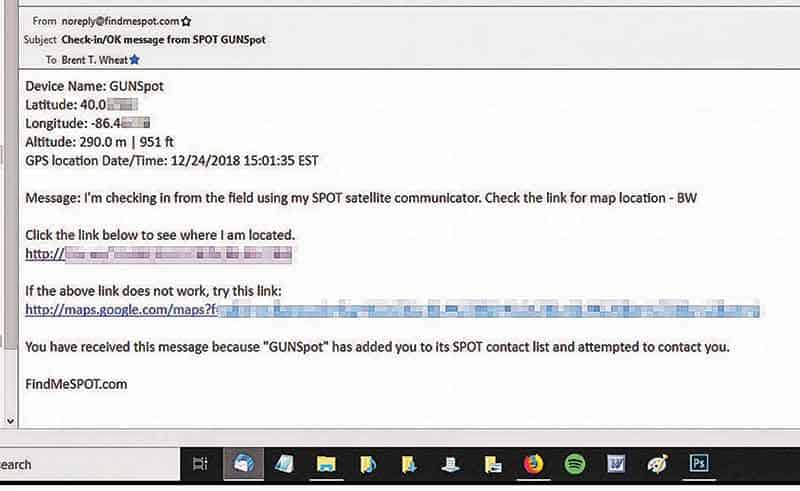Spot X Satellite Messenger
You’ll never walk alone …
Regardless of your taste in outdoor adventure, the Spot X keeps you in contact. Photo: Spot X
If you’ve spent any time in wild places, away from the ever-present cellular phone networks, you’ve had moments when you sorely wanted to communicate with the outside world. You might have been lost, injured perhaps, or simply wanted to brag about finally bagging the monster elk you’d been watching for years. In any event, if you’re carrying a Spot X satellite communication device, you can (probably) reach anyone via email or a cell phone.
If buffalo chips have really hit the fan, it’s also comforting to know help is on the way, plus you can speak directly with those coming to your aid!
The Spot X is a simple-to-use handheld device providing two-way satellite communication nearly any place you might travel, independent of land-based systems. Even better, you get such important, perhaps even life-saving capability at a price normal folks can afford.
About the size of a cell phone, the Spot X is easy to carry and use.
You’ll Know …
The messenger addresses one big shortfall with many satellite devices: you’ll know if the message has been received. I’ve used the tiny Spot Gen 3 “transmit-only” device for years and because consumer-grade satellite systems aren’t as robust as commercial beacons (such as those on ships or aircraft), I have experienced several failures to deliver a message.
Failing to notify your wife you’re going to be late for dinner because you’ve shot a deer isn’t a big deal but not knowing if emergency services got your call for help in a life-threatening circumstance is a big problem. The Spot X resolves this sticky problem without question.
The device employs a small touch keypad to make transmitting short messages as simple as sending a text from your cell phone. The keyboard is tiny and isn’t the easiest to use but entirely adequate for the purpose, while keeping overall device size minimal. The Spot X weighs in at a miniscule 7 oz. including battery and is the size of a largish cellular phone.
The Spot X delivers messages but can also build an online tracking map so others can follow your progress if you desire. It also provides quick buttons for checking-in, basically to say “Everything is hot, straight and normal with me,” plus an emergency button to instantly notify the Globalstar Emergency Response Center while sending along your last known lat/lon position. The rescue experts at the response center will verify your situation and notify the proper authorities.
The satellite system works over the majority of the globe but isn’t necessarily just for summoning rescue when venturing offshore or into trackless wilderness. The most common and valuable usage of the Spot X is for keeping in touch with family and friends when you’re away in the mountains at hunting camp or fishing a few miles offshore away from cellular service.
A Spot online tracking map (above) of Brent’s deer hunt. The check-in message (below) you can send to your contacts via Spot X.
Gone Fishin’
In my case, it works great at my favorite fishing spot. Even though I’m located in the middle of a moderately populated Midwestern farm country, my favorite creek is located in the middle of a total cell “hole.” Now equipped with the Spot X, I can tell my wife I’ll be late because of excessive dawdling or summon aid in case of a vehicle breakdown. In either situation, I’m not facing death or dismemberment but having such instant two-way communication makes for a much easier day.
Actually, if my wife made dinner plans and I’m late because the smallmouth bass were biting, I am definitely facing both death and dismemberment but even the rescue center experts can’t help there.
The Spot X does display GPS coordinates and a digital compass but doesn’t offer any mapping capability. However, as most cell phones are capable of replacing a hand-held GPS unit while off-line, I didn’t miss mapping. When you consider the SPOT X is a communication device offering location services rather than a true navigation device, the exclusion makes sense.
As mentioned, the one major downside with consumer-grade satellite communication is messages sometimes don’t arrive due to overhead obstructions or poor satellite positioning. This is why the Spot X and other such beacons should be considered an adjunct to emergency communications, not the only Plan A if things go wrong. Fortunately, with the two-way capability, it’s pretty simple to determine if your message reached the intended target. There is also the huge benefit of “speaking” directly with rescuers, something professional satellite beacons don’t.
The device uses rechargeable batteries, which doesn’t inspire a lot of confidence but during all-day jaunts I have yet to run the power down more than 25 percent. It is also submersible at 1 meter for 30 minutes and is IP67 impact-resistant (it’ll basically survive a waist-high drop).
You get all this capability and piece of mind starting at $12 a month plus the initial cost of $250 for the device itself. There are also pay-as-you-go plans if you only use the Spot X during hunting or fishing season.
While the Spot X isn’t a substitute for an EPIRB in your boat or ELT in the airplane, it does offer relatively cheap peace of mind, along with a significant additional layer of safety if you spend much time away from cell phone towers or radio systems. In fact, you could almost consider it a “workingman’s satellite telephone” and I’ve made the Spot X a standard part of my traveling and outdoor kit.







